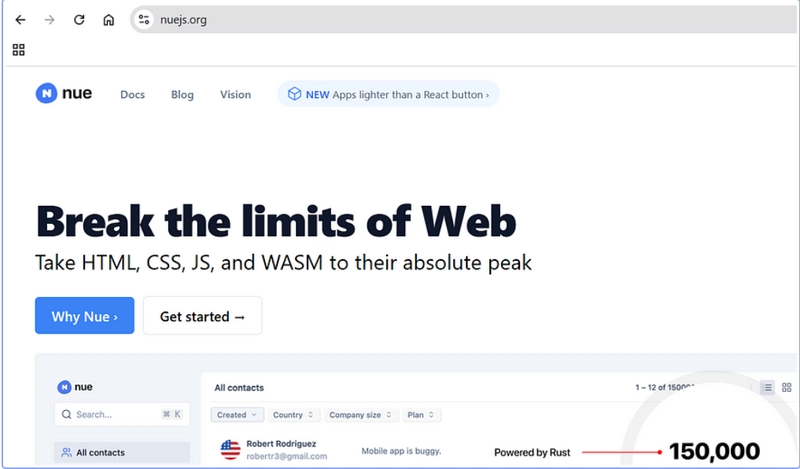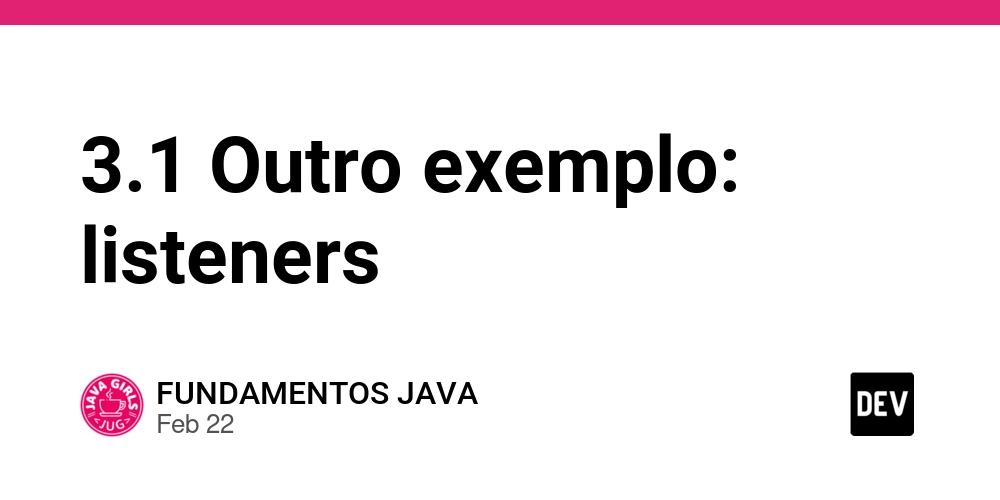"Unlocking Video Generation: VBench-2.0's Game-Changing Evaluation Framework"
In a world where video content reigns supreme, the challenge of generating high-quality, engaging videos can feel overwhelming. Are you struggling to keep pace with the rapid evolution of video technology? Do you find yourself lost in a sea of tools and frameworks that promise results but deliver frustration instead? Enter VBench-2.0—a revolutionary evaluation framework designed to transform your approach to video generation. This cutting-edge tool not only streamlines the process but also enhances creativity and efficiency, empowering creators like you to produce stunning visuals that captivate audiences. Imagine harnessing an intuitive platform that evaluates your work against industry standards while providing actionable insights for improvement! In this blog post, we will delve into the key features of VBench-2.0 and explore how it is reshaping the landscape of video production across various sectors—from marketing campaigns to educational content creation. Whether you're a seasoned professional or just starting out in this dynamic field, understanding VBench-2.0 could be your ticket to unlocking unparalleled potential in video generation technology. Join us as we embark on this journey toward mastering modern media creation! Introduction to VBench-2.0 VBench-2.0 is a cutting-edge benchmark suite specifically crafted for evaluating the intrinsic faithfulness of video generative models. Unlike traditional benchmarks that often focus on superficial metrics, VBench-2.0 delves into critical dimensions such as Human Fidelity, Controllability, Creativity, Physics, and Commonsense reasoning. This comprehensive evaluation framework aims to ensure that generated videos are not only visually appealing but also adhere to real-world principles essential for applications like AI-assisted filmmaking and simulated world modeling. Evaluation Dimensions The evaluation process incorporates innovative methods including text description alignment and video-based multi-question answering to assess model performance across various aspects such as human anatomy consistency and creativity in storytelling. By focusing on specialized dimensions like physics adherence and commonsense reasoning—evaluated through Motion Rationality and Instance Preservation—VBench-2.0 provides an unparalleled depth of analysis for next-generation video generation technologies. In addition, the framework emphasizes structured evaluations tailored with prompts designed to challenge models' capabilities effectively while ensuring they can handle complex narratives and dynamic changes within scenes accurately. With its robust methodologies addressing limitations found in existing benchmarks, VBench-2.0 sets a new standard for assessing the fidelity of video generation models comprehensively. Key Features of the Evaluation Framework VBench-2.0 introduces a robust evaluation framework that emphasizes intrinsic faithfulness in video generative models, moving beyond traditional benchmarks. It incorporates dimensions such as Human Fidelity, Controllability, Creativity, Physics, and Commonsense reasoning to ensure comprehensive assessments. The framework utilizes innovative methods like text description alignment and video-based multi-question answering to evaluate model performance effectively. Additionally, it employs specialist models for anomaly detection and human preference annotations to align evaluations with real-world principles. Comprehensive Evaluation Dimensions The inclusion of specialized metrics allows VBench-2.0 to assess complex aspects of video generation accurately. For instance, evaluating Motion Rationality ensures generated motions are physically plausible while Instance Preservation guarantees consistent object counts throughout videos. Furthermore, the focus on controllability evaluates how well models respond to intricate prompts and simulate dynamic changes in scenes—critical for applications like AI-assisted filmmaking or virtual world modeling. By addressing limitations found in existing benchmarks through structured methodologies and tailored prompts, VBench-2.0 sets a new standard for evaluating next-generation video generative models comprehensively. How VBench-2.0 Transforms Video Generation VBench-2.0 revolutionizes video generation by establishing a benchmark suite that evaluates the intrinsic faithfulness of generative models across multiple dimensions, including Human Fidelity, Controllability, and Creativity. Unlike traditional benchmarks that focus solely on superficial metrics, VBench-2.0 emphasizes real-world principles essential for applications such as AI-assisted filmmaking and simulated world modeling. This comprehensive evaluation framework incorporates human preference annotations to assess aspects like anatomical accuracy and consistency in generated videos. By introducing specialized evaluation methods—such as text description alignment and video-based multi-question answering—VBench-2.0 ensures

In a world where video content reigns supreme, the challenge of generating high-quality, engaging videos can feel overwhelming. Are you struggling to keep pace with the rapid evolution of video technology? Do you find yourself lost in a sea of tools and frameworks that promise results but deliver frustration instead? Enter VBench-2.0—a revolutionary evaluation framework designed to transform your approach to video generation. This cutting-edge tool not only streamlines the process but also enhances creativity and efficiency, empowering creators like you to produce stunning visuals that captivate audiences. Imagine harnessing an intuitive platform that evaluates your work against industry standards while providing actionable insights for improvement! In this blog post, we will delve into the key features of VBench-2.0 and explore how it is reshaping the landscape of video production across various sectors—from marketing campaigns to educational content creation. Whether you're a seasoned professional or just starting out in this dynamic field, understanding VBench-2.0 could be your ticket to unlocking unparalleled potential in video generation technology. Join us as we embark on this journey toward mastering modern media creation!
Introduction to VBench-2.0
VBench-2.0 is a cutting-edge benchmark suite specifically crafted for evaluating the intrinsic faithfulness of video generative models. Unlike traditional benchmarks that often focus on superficial metrics, VBench-2.0 delves into critical dimensions such as Human Fidelity, Controllability, Creativity, Physics, and Commonsense reasoning. This comprehensive evaluation framework aims to ensure that generated videos are not only visually appealing but also adhere to real-world principles essential for applications like AI-assisted filmmaking and simulated world modeling.
Evaluation Dimensions
The evaluation process incorporates innovative methods including text description alignment and video-based multi-question answering to assess model performance across various aspects such as human anatomy consistency and creativity in storytelling. By focusing on specialized dimensions like physics adherence and commonsense reasoning—evaluated through Motion Rationality and Instance Preservation—VBench-2.0 provides an unparalleled depth of analysis for next-generation video generation technologies.
In addition, the framework emphasizes structured evaluations tailored with prompts designed to challenge models' capabilities effectively while ensuring they can handle complex narratives and dynamic changes within scenes accurately. With its robust methodologies addressing limitations found in existing benchmarks, VBench-2.0 sets a new standard for assessing the fidelity of video generation models comprehensively.
Key Features of the Evaluation Framework
VBench-2.0 introduces a robust evaluation framework that emphasizes intrinsic faithfulness in video generative models, moving beyond traditional benchmarks. It incorporates dimensions such as Human Fidelity, Controllability, Creativity, Physics, and Commonsense reasoning to ensure comprehensive assessments. The framework utilizes innovative methods like text description alignment and video-based multi-question answering to evaluate model performance effectively. Additionally, it employs specialist models for anomaly detection and human preference annotations to align evaluations with real-world principles.
Comprehensive Evaluation Dimensions
The inclusion of specialized metrics allows VBench-2.0 to assess complex aspects of video generation accurately. For instance, evaluating Motion Rationality ensures generated motions are physically plausible while Instance Preservation guarantees consistent object counts throughout videos. Furthermore, the focus on controllability evaluates how well models respond to intricate prompts and simulate dynamic changes in scenes—critical for applications like AI-assisted filmmaking or virtual world modeling.
By addressing limitations found in existing benchmarks through structured methodologies and tailored prompts, VBench-2.0 sets a new standard for evaluating next-generation video generative models comprehensively.
How VBench-2.0 Transforms Video Generation
VBench-2.0 revolutionizes video generation by establishing a benchmark suite that evaluates the intrinsic faithfulness of generative models across multiple dimensions, including Human Fidelity, Controllability, and Creativity. Unlike traditional benchmarks that focus solely on superficial metrics, VBench-2.0 emphasizes real-world principles essential for applications such as AI-assisted filmmaking and simulated world modeling. This comprehensive evaluation framework incorporates human preference annotations to assess aspects like anatomical accuracy and consistency in generated videos. By introducing specialized evaluation methods—such as text description alignment and video-based multi-question answering—VBench-2.0 ensures a more nuanced understanding of model performance.
Comprehensive Evaluation Dimensions
The framework addresses critical limitations in existing benchmarks by focusing on physics adherence, commonsense reasoning, and creativity within generated content. It utilizes advanced methodologies like anomaly detection through specialist models to evaluate complex landscapes and dynamic attributes effectively. With its structured approach to assessing geometric consistency and diversity in outputs, VBench-2.0 sets a new standard for evaluating next-generation video generative models while guiding their development towards producing visually convincing yet fundamentally realistic videos.
Real-World Applications and Use Cases
VBench-2.0 serves as a pivotal tool in evaluating video generative models, with significant implications across various industries. In AI-assisted filmmaking, it enhances the creative process by ensuring that generated content adheres to human fidelity and commonsense reasoning, allowing filmmakers to produce more relatable narratives. Additionally, simulated world modeling benefits from VBench-2.0's focus on physics and controllability; this enables developers to create immersive environments that respond realistically to user interactions.
Moreover, applications extend into gaming and virtual reality where dynamic plot development is crucial for user engagement. By utilizing evaluation metrics such as motion rationality and instance preservation, game designers can craft experiences that maintain visual consistency while adapting to player choices. Furthermore, educational platforms leveraging video generation can utilize VBench-2.0’s robust framework for creating instructional videos that are not only visually appealing but also pedagogically sound.
Enhancing Content Creation
The structured evaluation methods of VBench-2.0 facilitate innovative approaches in content creation across media formats—be it blogs or interactive videos—by providing insights into effective storytelling techniques through prompt engineering and comprehensive assessments of model outputs. This ensures high-quality content production tailored for diverse audiences while pushing the boundaries of what automated systems can achieve in generating compelling narratives.
Getting Started with VBench-2.0
To begin utilizing VBench-2.0, users should familiarize themselves with its comprehensive evaluation framework designed for video generative models. The first step involves understanding the intrinsic faithfulness dimensions: Human Fidelity, Controllability, Creativity, Physics, and Commonsense reasoning. Each dimension is crucial for assessing how well a model generates realistic videos that adhere to real-world principles.
Users can access various tools within VBench-2.0 to conduct evaluations effectively. These include methods like text description alignment and video-based multi-question answering which help in aligning generated content with human expectations and semantics. Additionally, employing specialist models for anomaly detection ensures that any inconsistencies or unrealistic elements are identified promptly.
Evaluation Methodologies
The evaluation methodologies employed by VBench-2.0 focus on both qualitative and quantitative assessments of generated videos across multiple dimensions such as geometric consistency and motion rationality. By leveraging structured prompts tailored to specific aspects of video generation—like dynamic relationships or complex narratives—users can enhance their model's performance significantly while ensuring adherence to physical laws and commonsense logic throughout the content creation process.
Future Trends in Video Generation Technology
The evolution of video generation technology is poised to witness significant advancements, particularly with the introduction of frameworks like VBench-2.0. This benchmark suite emphasizes intrinsic faithfulness, focusing on dimensions such as Human Fidelity and Creativity that are crucial for realistic content creation. As AI-assisted filmmaking and simulated world modeling gain traction, the demand for models capable of generating visually convincing yet fundamentally accurate videos will increase. The integration of evaluation methods like text description alignment and multi-question answering will enhance model controllability, enabling more complex narratives and dynamic changes within generated content.
Emerging Evaluation Techniques
Future trends will likely see a greater emphasis on specialized evaluation metrics that assess physics adherence and commonsense reasoning in video generation models. These metrics ensure that generated videos not only look good but also behave realistically according to real-world principles. Additionally, advancements in prompt engineering could lead to improved user interactions with generative models, allowing creators to specify intricate details about plot development or character dynamics seamlessly.
As these technologies evolve, we can expect enhanced capabilities in generating diverse styles while maintaining geometric consistency across scenes—ultimately pushing the boundaries of creativity within digital storytelling.
In conclusion, VBench-2.0 represents a significant advancement in the realm of video generation technology, offering an innovative evaluation framework that enhances both efficiency and creativity in content creation. Its key features streamline the assessment process, allowing developers to focus on refining their models while ensuring high-quality outputs. The transformative impact of VBench-2.0 is evident across various real-world applications, from entertainment to education and marketing, showcasing its versatility and potential for widespread adoption. As users begin to explore this powerful tool, they will find it not only user-friendly but also instrumental in pushing the boundaries of what’s possible in video generation. Looking ahead, we can anticipate exciting trends that will further revolutionize this field—integrating AI advancements with enhanced interactivity and personalization capabilities—ultimately shaping how we create and consume visual media in the future. Embracing these innovations could redefine storytelling as we know it today.
FAQs about VBench-2.0's Evaluation Framework
1. What is VBench-2.0?
VBench-2.0 is an advanced evaluation framework designed to enhance video generation technologies. It provides a structured approach for assessing the quality and performance of various video generation models, ensuring they meet industry standards.
2. What are the key features of the VBench-2.0 evaluation framework?
The key features of VBench-2.0 include comprehensive metrics for evaluating video quality, user-friendly interfaces for easy integration, support for multiple video generation models, and robust benchmarking capabilities that allow users to compare different systems effectively.
3. How does VBench-2.0 transform video generation?
VBench-2.0 transforms video generation by providing standardized benchmarks that help developers identify strengths and weaknesses in their models quickly. This leads to improved model optimization and ultimately results in higher-quality generated videos that better meet user expectations.
4. What are some real-world applications of VBench-2.0?
Real-world applications of VBench-2.0 span various industries including entertainment (for movie production), education (for creating instructional videos), marketing (for generating promotional content), and gaming (for developing dynamic game environments). Its versatility makes it suitable for any sector utilizing automated video creation.
5. How can I get started with using VBench-2.0?
To get started with VBench-2.0, you can visit its official website where you'll find documentation on installation procedures, tutorials on how to use its features effectively, and community forums where you can seek assistance from other users or contribute your insights regarding best practices in video generation technology.











































































































































































![[The AI Show Episode 142]: ChatGPT’s New Image Generator, Studio Ghibli Craze and Backlash, Gemini 2.5, OpenAI Academy, 4o Updates, Vibe Marketing & xAI Acquires X](https://www.marketingaiinstitute.com/hubfs/ep%20142%20cover.png)




























































































































![[DEALS] The Premium Learn to Code Certification Bundle (97% off) & Other Deals Up To 98% Off – Offers End Soon!](https://www.javacodegeeks.com/wp-content/uploads/2012/12/jcg-logo.jpg)


![From drop-out to software architect with Jason Lengstorf [Podcast #167]](https://cdn.hashnode.com/res/hashnode/image/upload/v1743796461357/f3d19cd7-e6f5-4d7c-8bfc-eb974bc8da68.png?#)








































































































.png?#)


































_Christophe_Coat_Alamy.jpg?#)
.webp?#)
 (1).webp?#)






































































































![Apple Considers Delaying Smart Home Hub Until 2026 [Gurman]](https://www.iclarified.com/images/news/96946/96946/96946-640.jpg)
![iPhone 17 Pro Won't Feature Two-Toned Back [Gurman]](https://www.iclarified.com/images/news/96944/96944/96944-640.jpg)
![Tariffs Threaten Apple's $999 iPhone Price Point in the U.S. [Gurman]](https://www.iclarified.com/images/news/96943/96943/96943-640.jpg)



































































































































